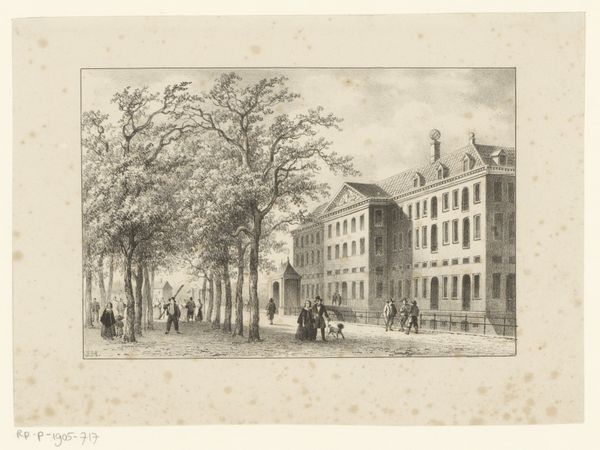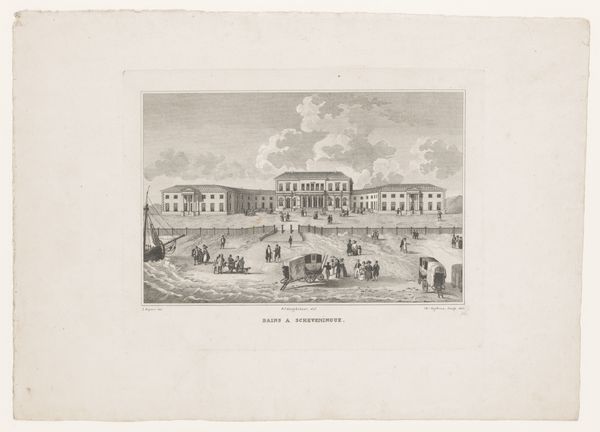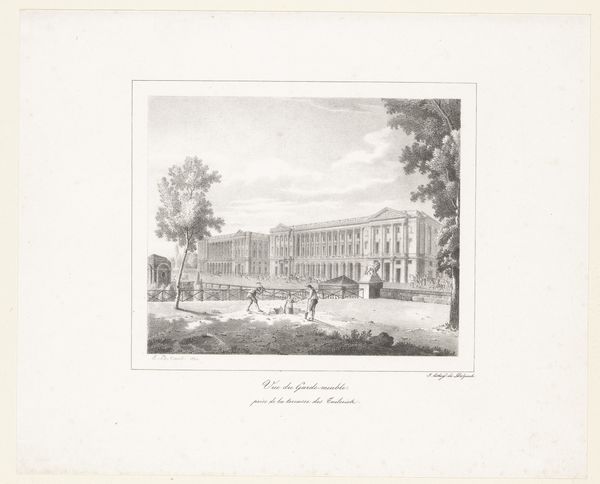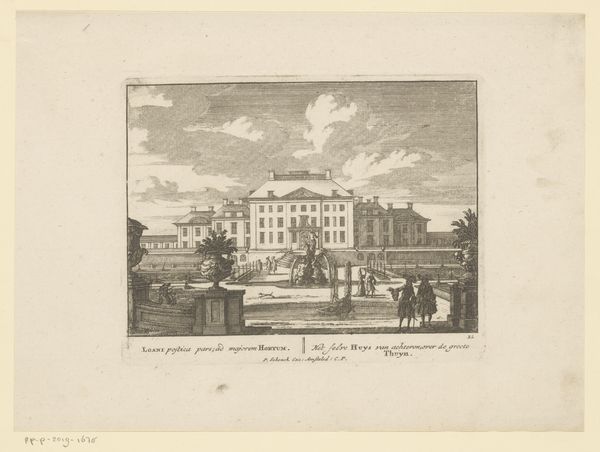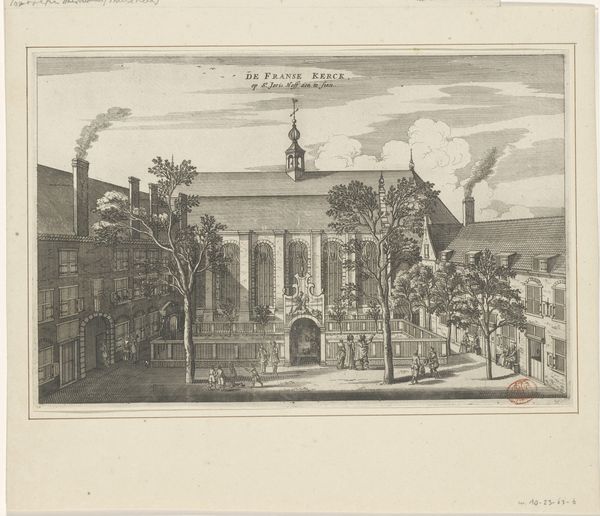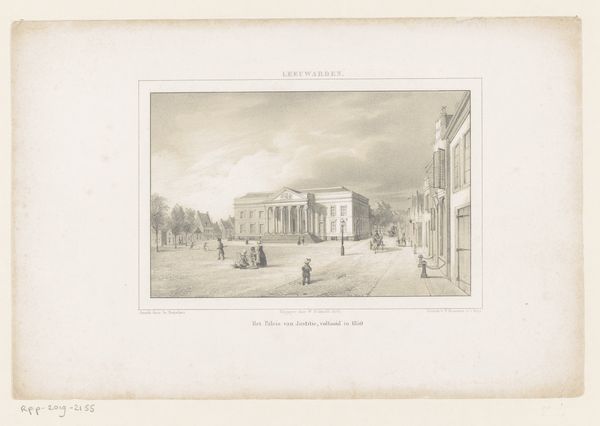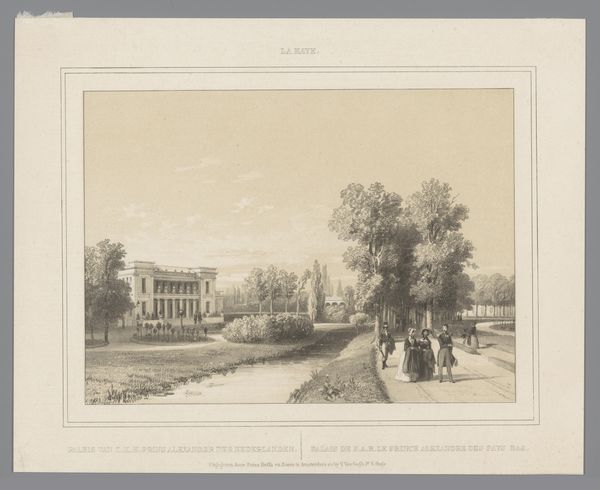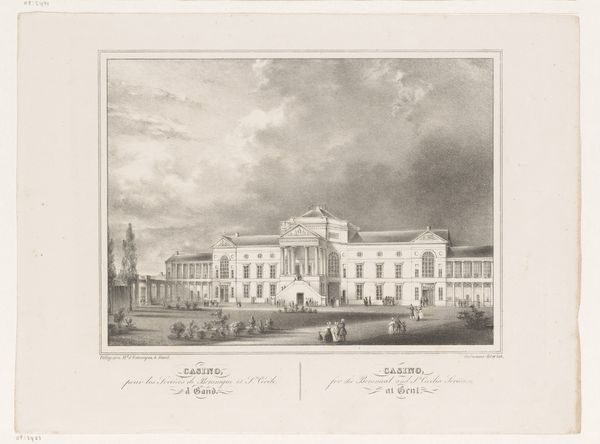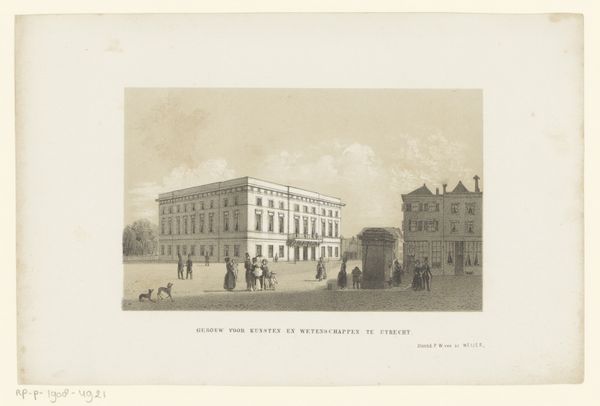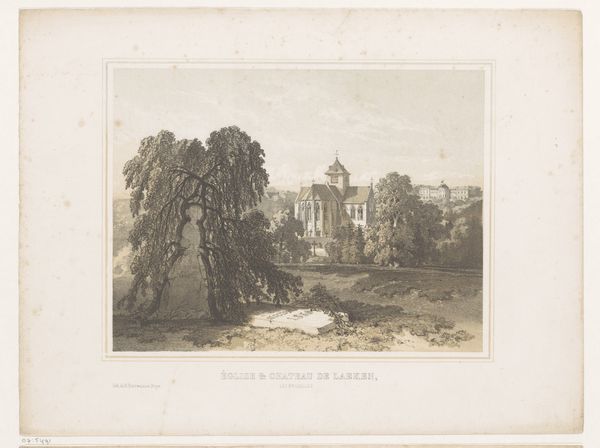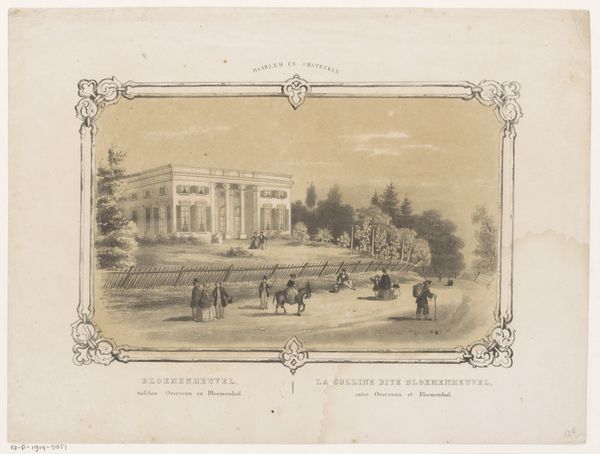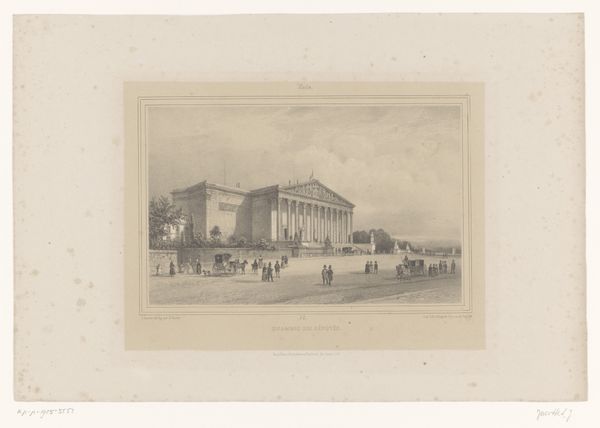
drawing, lithograph, print, paper, architecture
#
drawing
#
neoclacissism
#
lithograph
#
ink paper printed
# print
#
landscape
#
paper
#
coloured pencil
#
romanticism
#
cityscape
#
watercolor
#
architecture
#
realism
Dimensions: 242 × 349 mm (image); 399 × 569 mm (sheet)
Copyright: Public Domain
Curator: This is "The Church at the Tsarskoé-Sélo Palace," dating to around 1820 by C. Schultz. It's a lithograph printed with ink and color on paper. The artist used watercolor, coloured pencil, and print techniques. Editor: It possesses a kind of melancholy grace, doesn't it? The muted tones and the seemingly endless avenue evoke a sense of solitude. It speaks of power and perhaps its inherent isolation. Curator: Indeed. Schultz captures the grandeur of Russian Neoclassical architecture. The church, with its ornate onion dome, is framed by the palace buildings, showcasing imperial might but also…religious power. It’s quite explicit about their association, as sanctioned by God. Editor: Yes, and in this period of upheaval, the church was very much being used as a stage for Imperial performances and the legitimization of rulers. Notice how the human figures appear so small compared to the built environment—as if the architectonic program sought to diminish individuality. There is almost something Foucauldian at work here; space exerting control. Curator: You raise an interesting point. There’s a fascinating layering of symbols. Tsarskoé Selo, as a space, carries profound emotional weight within Russian cultural memory, a constant, almost painful reminder of both its imperial glory, the family and the tragedies that played out there. The artist certainly intended to emphasize the site's imperial and religious connections. Editor: Precisely. Beyond its aesthetic qualities, this print functions as a document, recording not just a place but the power dynamics embedded within it, and how these forces shaped the very landscape that people inhabited and navigated. The colours, composition, even the chosen print medium all feed that interpretation. Curator: Ultimately, Schultz’s work preserves both architectural details and intangible associations – the emotional echoes and the symbolic significance of place. The sacred merging with political ambition. Editor: And forcing us to contemplate, even now, the relationship between architectural space, social control, and the persistent imprint of the past.
Comments
No comments
Be the first to comment and join the conversation on the ultimate creative platform.
